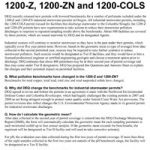 The state of Oregon regulates stormwater discharges from hundreds of industrial facilities primarily under two National Pollutant Discharge Elimination System (NPDES) general discharge permits (Permit) across the state. There are approximately 900 facilities regulated under the 1200-COLS (for discharges to the Columbia Slough) and 1200-Z (for many other industrial activities throughout the state) permits. The Oregon Department of Environmental Quality (DEQ) issued these permits to help improve stormwater quality entering our rivers, lakes, streams, and ocean, as required by federal and state law.
The state of Oregon regulates stormwater discharges from hundreds of industrial facilities primarily under two National Pollutant Discharge Elimination System (NPDES) general discharge permits (Permit) across the state. There are approximately 900 facilities regulated under the 1200-COLS (for discharges to the Columbia Slough) and 1200-Z (for many other industrial activities throughout the state) permits. The Oregon Department of Environmental Quality (DEQ) issued these permits to help improve stormwater quality entering our rivers, lakes, streams, and ocean, as required by federal and state law.
The Geometric Mean
Both permits have entered their third year of the 5-year permit cycle, and both had compliance timelines, data review, and data submittal requirements at the end of the second monitoring year (June 30, 2014).
Ongoing stormwater monitoring is not a new requirement for permitted facilities. Samples must be collected a minimum of four times a year (typically two fall and two winter/spring) with analytical results compared to permit benchmarks.
However, as a condition of the most recent Permits,
“Permit registrants must evaluate the sampling results collected during the 2nd year of permit coverage and determine if the geometric mean of the samples collected at each monitored outfall exceeds any statewide benchmark…”
The second year of the permit cycle ended June 30, 2014.
NOTE: The geometric mean is automatically calculated in the Excel version of the Discharge Monitoring Report (DMR). Be sure to not confuse the geometric mean with average! If you want to do it yourself, the geometric mean is calculated by using the product (multiply) of the sampling results and then taking the nth root (n = number of sampling events). You can also use the GEOMEAN function in Excel.
Additionally,
“If the geometric mean of the sampling results for any outfall monitored exceeds any statewide benchmark (or if more than three samples for any outfall are outside of the pH benchmark range)…”
then permitted facilities enter ‘Tier II corrective action’ stage and must implement changes at their facility.
Corrective Action Requirements
Here is where the time crunch begins. The following activities must be completed (in addition to the regular monitoring):
- Revise your facility’s Stormwater Pollution Control Plan (SWPCP), which may include a combination of source control, additional best management practices (BMPs), and even treatment measures – with the goals of achieving benchmarks. A licensed professional engineer (P.E.) or certified engineering geologist (CEG) must design and stamp the stormwater treatment sections of the SWPCP. DEADLINE – December 31, 2014.
- Implement stormwater corrective actions by the end of the 4th year of the permit cycle. DEADLINE – June 30, 2016.
Tier II Waivers
Tier II waivers from the above activities are applicable in only a few instances. DEQ requires the following:
- Documented evidence that the benchmark exceedance(s) is attributed solely to the presence of the pollutant(s) in natural background conditions and is not associated with industrial activities at the site, or
- Permittee implements or has implemented volume reduction measures, such as low impact development practices, that have or will result in reductions of the mass load of pollutants in the discharge below the mass equivalent of the benchmarks.
Permittees must submit a Tier II Waiver report to DEQ by December 31, 2014 (3rd year of permit coverage). DEQ or their agent will grant or deny the waiver request within 60 days of its receipt.
Strategize now!
If you have exceeded benchmarks and triggered Tier II Corrective Actions, it is important to strategize now. Source control can really bring your numbers down, as it is usually cheaper and easier to prevent pollutants from getting into stormwater in the first place than it is to remove them. Additionally, we have seen that simple, low-cost treatment options (sized correctly, of course) may adequately address many facility needs.
O regon DEQ has prepared a Fact Sheet to address frequently asked questions related to the permits.
regon DEQ has prepared a Fact Sheet to address frequently asked questions related to the permits.
If you are facing the task of Tier II Corrective Actions, remember Hope is NOT a BMP! If you have questions, need advice, or a P.E. to assist in your industrial stormwater challenges, KJ staff have developed proven solutions at dozens of industrial facilities. Remember, you need solutions, not just products.
If you are interested in more information on Kennedy Jenks, don’t forget to subscribe to our blog!

